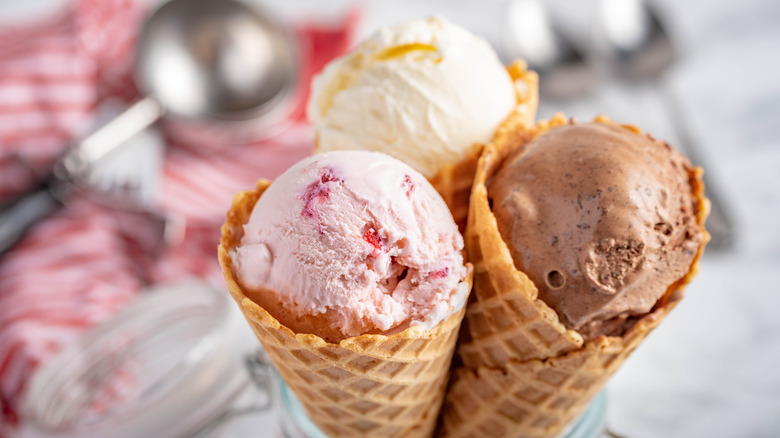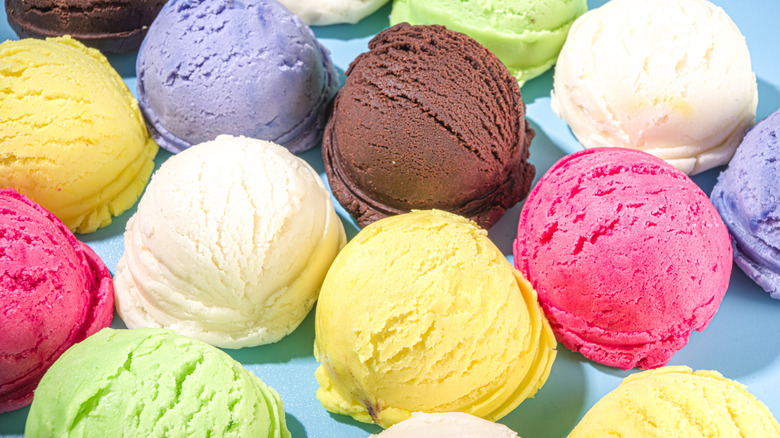The Easy Trick To Prevent Ice Crystals On Homemade Ice Cream
Just because summer's nearly out of season doesn't mean its signature dessert has to melt away. Ice cream is a delightful treat year-round that tastes just as good from its container as it does a cone. Yet while store-bought ice cream certainly does the trick, there's something extra fun about making a batch from scratch. Whether you're letting your base churn automatically or attempting ice cream sans a machine — yes, it's possible — you can whip up a perfectly creamy bowl of your favorite flavor.
To start out in your ice cream-making expenditure, you'll need a few baseline ingredients. Heavy cream or milk, sugar, and egg yolks are standard in most ice cream recipes regardless of your intended flavor. According to The Washington Post, egg yolks are especially important because they act as an emulsifier. They help bind ingredients and thicken the ice cream base to its ideal consistency. If you're opting to forgo yolks, however, this same emulsifying effect can be achieved by boiling your base.
Once you've gotten your base down, you can get experimental and incorporate cream cheese, flavor extracts, and chunky mix-ins. But no matter how delicious your ice cream may ultimately taste, its longevity is fickle and at the whims of temperature. Properly freezing your ice cream is therefore essential — and for that, you'll need to plan ahead.
Chill your container – and your base – throughout the process
Here's one tip that's crystal clear: chill your ice cream and its container.
It may sound obvious, because of course ice cream requires freezing. But that doesn't mean you can just stick your ice cream in the freezer once it finishes churning. According to Martha Stewart, homemade ice cream should be kept cold at all stages of the process. The base should be chilled before it even reaches the ice cream machine, which will keep ice crystals small during the churning period.
Per The Washington Post, you should also pre-freeze your ice cream container and its lid — as well as ingredient mix-ins. The colder you keep everything, the smaller the ice crystals that form.
"Make sure the storage container is fully chilled before you put the ice cream inside of it," chef Fany Gerson of ice cream shop La Newyorkina told Food & Wine. "The coldness of the container will help prevent ice crystals from forming on the ice cream itself."
So keep your ice cream chilled — but your fudge hot. You'll be passing around crystal-free sundaes in no time.

